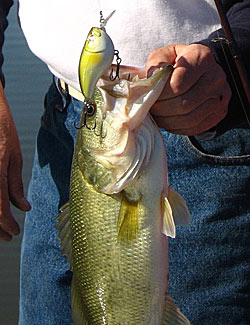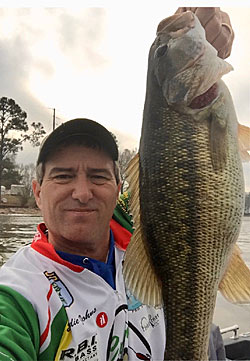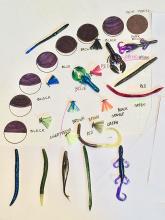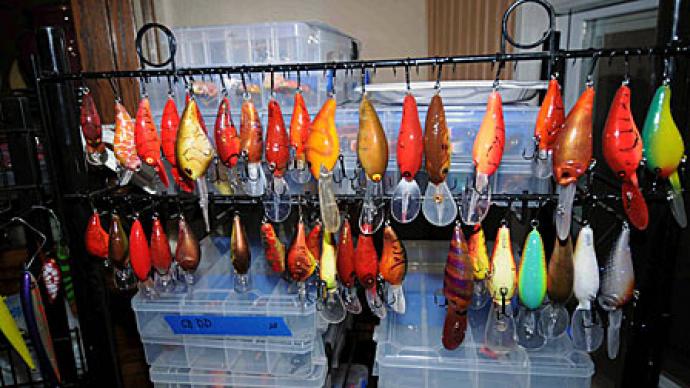
What color are they biting? Are they biting a color, or are they biting a movement or a shape? Does the color lure you use even matter, or do other factors outweigh it? A trip to the local tackle shop or a search online will reveal thousands of colors of lures, plus paint, stain, and dye to help you add even more color. Dip the tails, paint the eyes, and melt a different colored back end on it – even once you decide on a color, you can cover your bases by adding a splash of something else. So how do you decide? I decided to ask a bunch of fishermen – pros and weekend anglers, and some of the answers may surprise you.
The number one answer I received when I asked how to choose color was this. “In clear water, use light and dark colors in stained water.” Seriously? If that’s all there is to it, tackle shops should stock black and white. Usually, there is a bit more to it, which leads us to answer number two.
“Match the hatch.” This is a term coined by fly fishermen who tie flies identical to the insects currently flying around the stream where the fish are. Many bass fishermen use a similar system, choosing baits very close to the forage in the lake they are fishing. For instance, if you’ve ever seen a threadfin shad, you understand why a Rat L Trap has the shape it has and why it has a black dot on it. Many fishermen put the first few fish in the livewell just to see if they’ll upchuck – if you find nothing but crawdads at the bottom of the livewell, you’ll probably want to fish a jig. You can also see what color the craws are, which can vary widely. I’ve seen blue, orange, green, and even red ones so dark they’re almost black.
You don’t have to get a fish to empty its stomach in your livewell, though. Often you’ll see clouds of baitfish near your boat. Pay attention to those, and maybe even have a fine mesh net and see if you can scoop one up. Are they long and thin, or do they have wider profiles? Do they have a bluish tint, or are they more on the brown side? Pick your cranks and swimbaits accordingly. In our big western reservoirs, the Game and Fish Department often stocks rainbow trout, and anglers with the nerve to throw a big trout swimbait can catch enormous bass, especially on trout stocking day. I’ve also known guys who turn over a few rocks in the shallows just to see what color the craws are when they come darting out.
What about worms, though? Have you ever actually seen a worm swimming around in the lake? Me neither. But we all know that bass will inhale them regularly, and we love those worms because there are a million ways to fish them. But how do you choose a color when there is no natural prey to mimic? I know a few guys who use the empty spindle method. Go to the tackle shop and just look around. Whatever spindle is empty, that’s the most popular lure, so use that -- or something darn close to it. But there might be a better, more scientific way.

Much research has been done on how bass see and react to different colors. According to the biologists at Berkley, the colors bass see best are medium red to green, and their vision decreases toward blues and purples and also toward the reds on the end of the scale. That may explain why there are so many shades of green in the tackle shop and why green lizards and Senkos work so well. Maybe it isn’t that the color is attractive – just obvious.
The late Loren Hill came up with a little device you may have heard of – the Color C Lector. It has a probe that you drop into the water at the depth you want to fish at, and the Color C Lector will tell you which colors are most visible in the light available down there. It doesn’t tell you which color the fish want, just which ones they can see. Can a bass catch something he can’t see? Maybe – if he can home in on it by hearing. But it’s easier for both of you if you use something easily visible. I used to have a Combo C Lector, who told you the color AND the pH, but I have no idea what happened to it. Pradco even used to make a series of lures with Color C Lector colors, and I sure wish I still had that dark blue Rebel. It seriously caught fish.
One of the best spinnerbait fishermen I have ever met didn’t care much what color the spinnerbait was – as long as it had some red. He was convinced that the red made the bass think the bait was wounded and easy prey. This guy always carried red markers and paint and would always add a dab of red to any lure he fished. He’d paint a red dot on the blade, dip the tails of worms in red dye, and even use red hooks. He was convinced that the red made a huge difference. I know that guy won a lot of money in tournaments and was highly respected by his fellow anglers. Since red is one of the colors that bass see well, there might be a method to his madness.
If you’ve been counting, that’s five different ways fishermen use choose color. But I’ve got one that I bet you have NEVER heard of before – choosing color by moon phase. You may recall a story on Bassresource.com about Eddie Johns – the man with decades of notes organized in “The Book.” This book has helped Johns immensely, and it’s something you can do. He urges you to do it on paper, not digitally, because “you could drop your phone in the lake.”
As Eddie began to keep his notes, he first organized them by year. But after eleven or twelve years, as the book grew and grew, he began to group notes by month. He realized that specific colors seemed to work at the same moon phase each month. To test his theory, he would try different colors – really give them a good go, too. He says he proved his theory right. He eventually came up with a chart that he uses to choose a color on any given day. This chart, he says, goes perfectly with many of the colors of lures made by Crème Lures.
Since this chart results from over thirty years of research, Eddie isn’t willing to share the entire thing, but he did agree to share a portion of it. Here’s how it works: The outer circle shows the 29 days of the moon phase, and the next circle is the season: spring, summer, fall, and winter. He chooses the color by first looking at the phase of the moon, then moving into the line showing the season. For example: if he’s fishing in the spring between the new moon and the first quarter, the primary color is black. Spring is chartreuse and blue, so on those days, he’d choose a black and blue or black and chartreuse bait and fine-tune it from there, often using Ziptailz to add and change colors.
His chart just gives him the starter colors, and he goes from there, sometimes choosing a bait with flakes, different shades, etc. The shades of colors are essential, he says. It’s not an exact science, but it gives him something to work with. When he teaches his high school fishing team, he tells them that it works when you apply it. Still, it’s not something you can go out and expect immediate results with – the chart I’ve shown you here is just the tip of the iceberg, and the point is that you need to go out and start writing notes about every fishing trip.
Johns stresses that shades of colors are essential and will make a difference. The water's depth and clarity also play a part because of light penetration. Like most of the pros, I asked said, you’ll use lighter colors in clear water and darker shades in deep or stained water. You can scoff at this if you want, but I tried it out, fishing against my boater, and I outfished him 3:1 using the colors Eddie said would work. He lives in Alabama, and I live in Arizona. But the moon is the same everywhere.
So how do YOU choose color? Do you use what a buddy told you was working? Or maybe you pick a color because it’s named after a fisherman you admire? Eddie Johns says that color does matter. He says if you’re fishing a tournament and the fish you found in prefish aren’t biting, maybe they haven’t moved – maybe the moon phase changed, and they want a different color. Is it because that’s what they see better right then, or is it more? Why not start keeping notes right now? The results may surprise you.





